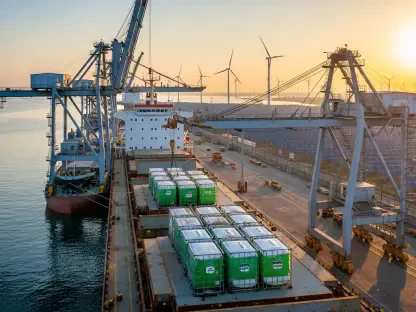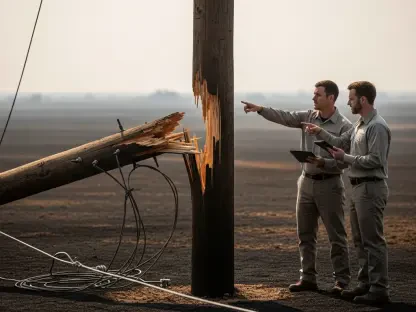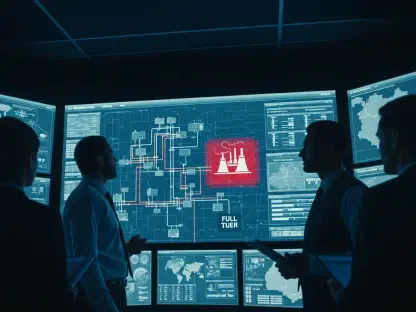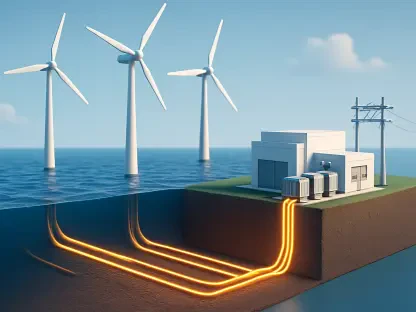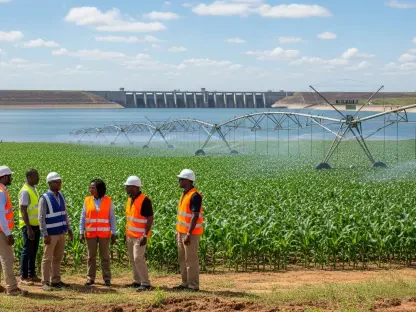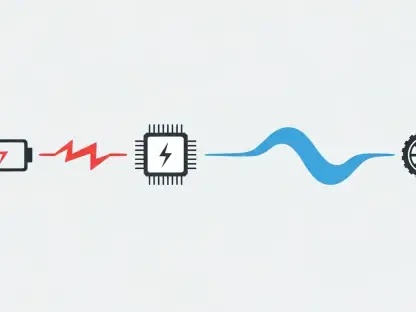Nestled in north-central Kentucky, Fort Knox has long been synonymous with its gold depository. However, in recent years, the military installation has garnered attention for its remarkable strides in energy self-sufficiency and resilience. This transformation did not happen overnight but is the result of two decades of meticulous planning, trial, and innovation. Here, we explore the groundbreaking efforts that have turned Fort Knox into a self-sustaining energy powerhouse, offering a blueprint for other military installations around the globe.
The Initial Dependence and Initial Steps Toward Change
Fort Knox historically relied on external utilities for its energy needs, primarily natural gas and coal-fueled electrical power provided by Louisville Gas & Electric (LG&E). The military installation also benefited from a unique agreement with the Department of Interior that allowed LG&E to store natural gas beneath the base for both the installation and surrounding communities. Despite these arrangements, the reliance on external resources posed risks and financial strains, compelling the Directorate of Public Works (DPW) to seek alternative solutions in the 1990s. Early brainstorming sessions led to an exploration of various renewable energy sources.
Wind turbines were one of the first options considered but quickly proved impractical due to Kentucky’s inconsistent wind conditions. Attention then shifted to solar power, resulting in the construction of a 10-acre solar array containing 10,000 panels. This installation, once the largest in the Army, delivered up to 2.1 megawatts of power, yet it still fell short of meeting all of Fort Knox’s energy demands due to the state’s temperate, humid climate affecting solar panel efficiency.
Geothermal Energy: Tapping into Nature
Faced with the limitations of wind and solar energy, Fort Knox pivoted its focus to geothermal energy, leveraging Kentucky’s abundant underground cave networks. The geothermal strategy utilizes the Earth’s constant underground temperature—around 55 degrees Fahrenheit—to provide efficient heating and cooling. By connecting over 250 facilities to this system, Fort Knox achieved efficiency levels three times higher than conventional HVAC systems, with the added costs of piping and well installations recouped within eight years. The resilience and efficiency of the geothermal system became increasingly apparent, particularly in extreme weather conditions.
The system’s ability to absorb excess heat during the summer and provide warmth in the winter ensured a stable, reliable energy supply, suited for the variable Kentucky climate. This self-sustaining capability significantly reduced Fort Knox’s dependence on external utilities and showcased the effectiveness of geothermal energy in large-scale applications.
The 2009 Ice Storm: A Catalyst for Change
The journey toward energy independence accelerated dramatically following a severe ice storm in 2009 that left Fort Knox without power for ten days. The outage disrupted heating and water supplies, highlighting the severe risks associated with relying on external electricity grids. This event served as a critical inflection point, propelling the base to reassess its energy strategy.
The 2009 ice storm underscored the importance of decentralized power generation. As a result, Fort Knox intensified efforts to develop a more resilient energy infrastructure that could operate independently of external power sources. This shift in focus proved instrumental in driving the subsequent innovations that would fortify the base’s energy independence and security.
Natural Gas: The Backbone of Decentralized Power
Upon recognizing the flaws in its energy architecture, Fort Knox identified natural gas as the optimal energy source for decentralized power generation. Kentucky’s plentiful natural gas deposits offered a reliable and environmentally friendlier alternative to coal or diesel. Starting in January 2010, Fort Knox initiated the drilling of wells to extract biogenic methane gas, eventually operating 20 usable wells. To further bolster its energy supply, Fort Knox accessed a transcontinental natural gas pipeline. This dual-source approach ensured a steady flow of natural gas, which was then purified and distributed through six substations equipped with large gas generators.
These substations played a pivotal role in generating and distributing electricity across Fort Knox’s microgrid, cementing the installation’s ability to operate “off the grid” when necessary. The success of this natural gas strategy lay not only in its immediate energy benefits but also in its long-term sustainability. By establishing a stable and controllable energy supply, Fort Knox mitigated risks associated with energy dependence, ultimately setting a precedent for other military installations to follow.
Automation and Cost Efficiency
The decentralized power project, with its $62 million price tag, soon demonstrated its financial viability. Automation became a cornerstone of this initiative. A central control hub, housed in a bunker, oversees real-time energy production and distribution. The automated system deftly aligns energy supply with fluctuating demand, optimizing operational efficiency and reducing costs. Moreover, the capability to generate and store power allowed Fort Knox to capitalize on utility rate structures, leading to additional cost savings.
The transition to an automated, decentralized model not only ensured energy self-sufficiency but also underscored Fort Knox’s commitment to financial prudence and technological innovation. Through automation, Fort Knox integrated real-time monitoring and management capabilities, enabling quick adjustments and ensuring optimal performance. This approach significantly minimized downtime and maximized energy production efficiency, revealing a profound level of expertise in modern energy management.
Off-Grid Testing and Resilience
Regular testing has been essential in maintaining and improving Fort Knox’s energy resilience. Twice annually, the base conducts off-grid exercises by cutting external power to verify that its systems perform as intended. These drills provide critical insights that enhance the overall resilience of the installation’s energy framework. Each testing cycle helps Fort Knox identify potential weaknesses and resolve them immediately, thereby guaranteeing the installation is always prepared for unforeseen disruptions.
An unplanned utility company power cut on December 23, 2022, further validated Fort Knox’s energy resilience. The base regained full functionality within 90 minutes, underscoring the robustness of its energy setup. These real-world stress tests offer invaluable feedback, aiding continuous improvements and reinforcing the reliability of Fort Knox’s energy systems. By rigorously assessing and refining their strategies, Fort Knox has built a dynamic and resilient energy infrastructure capable of adapting to varying conditions.
Environmental Impact and Future Directions
The shift to gas-fired power has considerably reduced greenhouse gas emissions. Excess heat from natural gas extraction is captured and used in absorption chillers to produce cooling energy, enhancing the system’s environmental efficiency. Lithium bromide in the chillers converts waste heat into chilled water, serving air conditioning needs across the installation, including the energy-intensive Army Human Resources Command Maude Complex.
In 2022, Fort Knox was designated by the Department of Defense as a pilot site to study natural gas utilization and its scalability across other military installations. The energy program is now investigating greater natural gas storage, obtaining Enterprise Mission Assurance Support Service certification, and enhancing their central control systems. Additional funding from the Department of Energy is facilitating the development of fuel cells and battery storage to further enhance energy efficiency and reduce emissions by up to 50%.
Real Estate and Utility Relationships
Negotiations are ongoing to secure a new agreement with LG&E regarding leased land and gas storage operations initiated in the early 1940s. This real estate action aims to achieve mutually beneficial terms, integrating findings into Department of Defense charter reports. By negotiating effectively, Fort Knox aims to safeguard its energy infrastructure, ensuring it remains both operationally secure and financially viable. These new terms are expected to provide greater flexibility, allowing Fort Knox to further innovate its energy strategies.
Conclusion
Located in north-central Kentucky, Fort Knox has traditionally been known for its gold depository, a symbol of American wealth and security. However, in recent years, this historic military installation has made headlines for an entirely different reason: its impressive achievements in energy self-sufficiency and resilience. This transformation is not a sudden change but the culmination of two decades of detailed planning, trials, and innovation.
Fort Knox’s journey towards energy independence has been marked by numerous groundbreaking efforts. The installation has invested in a variety of renewable energy sources, including solar and geothermal systems, to ensure a steady and reliable energy supply. These initiatives have not only reduced the base’s reliance on external energy but have also made it a model of sustainability and resilience.
This commitment to energy innovation serves as a valuable blueprint for other military installations around the world. Fort Knox demonstrates that with careful planning and investment in renewable technologies, it is possible to achieve energy independence and enhance operational resilience. The success at Fort Knox is a testament to what can be achieved when innovation and forward-thinking strategies are put into action. As other installations look to bolster their energy security, Fort Knox’s pioneering efforts offer a valuable guide.


